
20 English Essay Topics/Questions | B2 First (FCE)
The language of an English essay should be formal . Also, make sure that you justify all your ideas and that you use appropriate connectors to link your sentences and paragraphs .
How to write B2 First (FCE) essay?
Ad: When writing a professional essay, you can choose a professional essay writing service for your instant success.
B2 First (FCE) Essay: Example Topics / Questions
Below is a sample list of academic essay writing topics/tasks for B2-level (intermediate) students. You can use them to practice writing English essays or to prepare for the Cambridge B2 First (FCE) exam
B2 - Essay Topic / Question 1 | First (FCE)
You have watched a documentary about young children in poor areas who leave school to work. Your English teacher has asked you to write an essay.
Write an essay using all the notes and give reasons for your point of view.
Teenagers are dropping out of school to find a job. How can we help them to continue their education?
Write about:
- family problems
- financial difficulties
- …………… (your own idea)
B2 - Essay Topic / Question 2 | First (FCE)
In your social studies course, you have watched a documentary on the potential effects of too much pollution on the air quality of city centres. Your professor has assigned you an essay to write.
Keeping the air quality in city centres at healthy levels for their residents is a concern for many places. How can we solve the problem of pollution in city centres?
- automobiles
- ……………… (your own idea)
B2 - Essay Topic / Question 3 | First (FCE)
In your education class, you have listened to a lecture on the importance of teaching foreign languages in school. Your teacher has asked you to write an essay.
Learning a foreign language helps students develop a set of important skills. Why should foreign languages be taught in schools?
- new cultures
- employment
- …………. (your own idea)
B2 - Essay Topic / Question 4 | First (FCE)
You have listened to a radio programme about the problem of widespread starvation in many parts of Africa. Your English teacher has asked you to write an essay.
In many parts of Africa, people are dying of starvation and lack of freshwater. Can these problems be solved?
- lack of organised farming
- …….. …….. (your own idea)
B2 - Essay Topic / Question 5 | First (FCE)
You have watched a video on a non-profit organisation working to stop the use of animals for testing medicines used by human beings. Now, your professor has asked you to write an essay.
Testing on animals is a standard in scientific research. What is the best way to deal with this problem?
- animals suffer
- outdated form of research
- …… …….. (your own idea)
Get Your (FCE) Essay Checked!
B2 - essay topic / question 6 | first (fce).
You have listened to a radio programme about deforestation, the cutting down of trees in many wild areas around the world. Now, your English teacher has asked you to write an essay.
Many forests around the world are being destroyed for agricultural, commercial, or housing use without allowing time for the forests to regenerate themselves. What can be done to improve the situation?
- what contributes to the greenhouse effect
- ………. (your own idea)
B2 - Essay Topic / Question 7 | First (FCE)
In your English class, you have been talking about endangered species, animals or plants that will likely become extinct. Your English teacher has asked you to write an essay.
Around the world, many wildlife species are in danger of extinction. How can we protect endangered animals?
- hunting wild animals
- ……….. (your own idea)
B2 - Essay Topic / Question 8 | First (FCE)
You have watched a Youtube video about the problem of computer game addiction in children. Your English teacher has asked you to write an essay.
More and more young people spend most of their time playing computer games. How can we help children to overcome this addiction?
- bad grades at school
- no social life
- ………… (your own idea)
B2 - Essay Topic / Question 9 | First (FCE)
You have listened to a radio programme about the impact of smoking on people’s health. Now, your English teacher has asked you to write an essay.
Smoking is responsible for many health problems throughout the world. Do you think it should be made illegal?
- lung cancer
- passive smoking
- ……………… (your own idea)
FCE, CAE, CPE
More than practice tests, b2 - essay topic / question 10 | first (fce).
In your English class, you have been talking about the problem of obesity in young people. Now your English teacher has asked you to write an essay.
In Europe and the USA a lot of young people have an obesity problem. What can be done to solve this problem?
- (your own idea)
B2 - Essay Topic / Question 11 | First (FCE)
Has technology made a positive contribution to sport today?
- The use of technology to improve performance
- The use of technology in refereeing decisions
B2 - Essay Topic / Question 12 | First (FCE)
It is better to work at home than in an office. Do you agree?
- Contact with people
- Working hours
B2 - Essay Topic / Question 13 | First (FCE)
Life is harder for young people now than in the past. Do you agree?
B2 - Essay Topic / Question 14 | First (FCE)
Is it better to go shopping in small local businesses or large out-of-town shopping centres?
- Where things are cheaper
- Where service is better
B2 - Essay Topic / Question 15 | First (FCE)
Is it better to spend a summer holiday in the countryside or on the coast?
- Leisure options
B2 - Essay Topic / Question 16 | First (FCE)
Your teacher has asked you to write your response to the following statement taken from a recent newspaper article:
Do you agree that community service works better than fines?
- effort and time
- lesson learned
- ………………(your own idea)
B2 - Essay Topic / Question 17 | First (FCE)
Is it true that we help the environment when we plant a tree?
- clear the air
- ………….( your own idea)
B2 - Essay Topic / Question 18 | First (FCE)
Nowadays children are suffering from obesity, that was once considered to be meant for adults only. What are its causes and what solutions can be offered?
- busy lifestyle
B2 - Essay Topic / Question 19 | First (FCE)
Is it better to be the oldest or the youngest in a family?
- role of older sibling
B2 - Essay Topic / Question 20 | First (FCE)
Modern lifestyles can seriously endanger our health.
Do you agree?
- physical activity
- …….. (your own choice)
B2 First (FCE) Essay: Download (PDF)
Download B2 First (FCE) Essay: Topics (PDF)
Practice Tests Online
B2 first (fce) essay: assessement criteria.
Your essay will be assessed according to these four criteria:
What is your level of English?
100 Writing Practice Lessons & Exercises
by Joe Bunting | 50 comments
Want to become a better writer? Perhaps you want to write novels, or maybe you just want to get better grades in your essay writing assignments , or maybe you'd like to start a popular blog .
If you want to write better, you need practice. But what does a writing practice actually look like? In this post, I'm going to give you everything you need to kick off your writing practice and become a better writer faster.
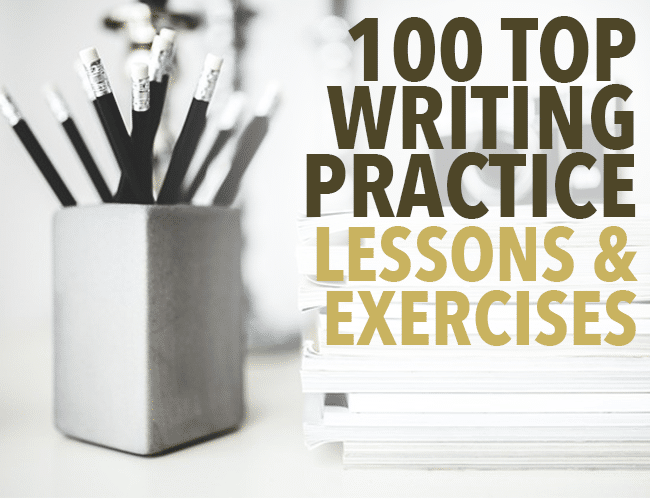
What Is Writing Practice?
Writing practice is a method of becoming a better writer that usually involves reading lessons about the writing process, using writing prompts, doing creative writing exercises , or finishing writing pieces, like essays, short stories , novels , or books . The best writing practice is deliberate, timed, and involves feedback.
How Do You Practice Writing?
This was the question I had when I first started The Write Practice in 2011. I knew how to practice a sport and how to practice playing an instrument. But for some reason, even after studying it in college, I wasn't sure how to practice writing.
I set out to create the best writing practice I could. The Write Practice is the result.
I found that the best writing practice has three aspects:
Deliberate . Writing whatever you feel like may be cathartic, but it's not an effective way to become a better writer or build your writing skills. You'll get better faster by practicing a specific technique or aspect of the writing process each time you sit down to write.
This is why we have a new lesson about the writing process each day on The Write Practice, followed by a practice prompt at the end so you can put what you learned to use immediately.
Timed . It's no secret writers struggle with focus. There are just too many interesting distractions—Facebook, email, Kim Kardashian's Instagram feed (just kidding about that last one, sort of)—and writing is just too hard sometimes.
Setting a timer, even for just fifteen minutes, is an easy and effective way to stay focused on what's important.
This is why in our writing practice prompt at the end of each post we have a time limit, usually with a link to an online tool egg timer , so you can focus on deliberate practice without getting distracted.
Feedback . Getting feedback is one of the requirements to deliberately practice writing or any other craft. Feedback can look like listening to the reactions of your readers or asking for constructive criticism from editors and other writers.
This is why we ask you to post your writing practice after each lesson, so that you can get feedback from other writers in The Write Practice community. It's also why we set up The Write Practice Pro community , to provide critique groups for writers to get feedback on each finished piece of writing.
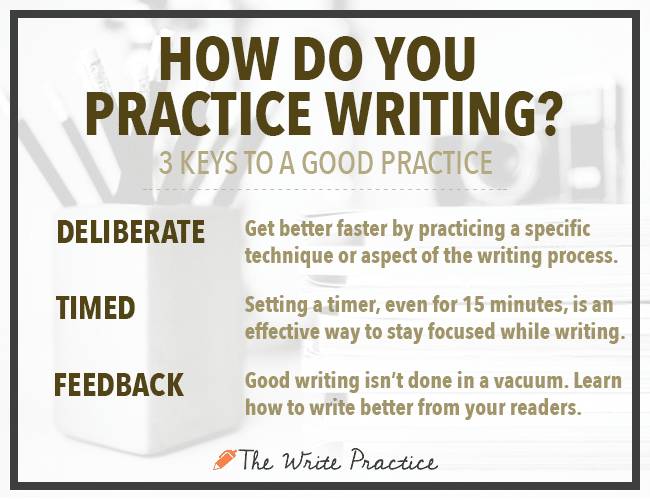
Our 100+ Best Creative Writing Practice Exercises and Lessons
Now that you know how we practice writing at The Write Practice, here are our best writing practice lessons to jumpstart your writing skills with some daily writing exercises, for beginner writers to even the most expert writers:
All-Time, Top 10 Writing Lessons and Exercises
These ten posts are our most viewed articles to boost your writing practice:
1. What is Plot? The 6 Elements of Plot and How to Use Them . Great stories use similar elements in wildly different ways to build page-turning stories. Click here to read what they are and learn how to start using them !
2. Top 100 Short Story Ideas . Here are over a hundred writing prompts in a variety of genres. If you need ideas for your next story, check this out!
3. How To Use Neither, Nor, Or, and Nor Correctly . Even good writers struggle figuring out when to use neither/nor and either/or. In this post, our copy-queen Liz Bureman settles the confusion once and for all. Click to continue to the writing exercise
4. Ten Secrets To Write Better Stories . How does Pixar manage to create such great stories, year after year? And how do you write a good story? In this post, I distill everything I've learned about how to write a good story into ten tips. Click to continue to the writing exercise
5. 35 Questions To Ask Your Characters From Marcel Proust . To get to know my characters better, I use a list of questions known as the Proust Questionnaire, made famous by French author, Marcel Proust. Click to continue to the writing exercise
6. How a Scene List Can Change Your Novel-Writing Life . Creating a scene list changed my novel-writing life, and doing the same will change yours too. Includes examples of the scene lists from famous authors. Click to continue to the writing exercise
7. Why You Need to be Using the Oxford Comma . Most people I've met have no idea what the Oxford comma is, but it's probably something that you have used frequently in your writing. Click to continue to the writing exercise
8. Six Surprising Ways to Write Better Interview Questions. The interview is the most-used tool in a journalist's bag. But that doesn't mean novelists, bloggers, and even students can't and don't interview people. Here's how to conduct a great interview. Click to continue to the writing exercise
9. Why You Should Try Writing in Second Person . You've probably used first person and third person point-of-view already. But what about second person? This post explains three reasons why you should try writing from this point-of-view. Click to continue to the writing exercise
10. The Secret to Show, Don't Tell . You've heard the classic writing rule, “Show. Don't Tell.” Every writing blog ever has talked about it, and for good reason. Showing, for some reason, is really difficult. Click to continue to the writing exercise.
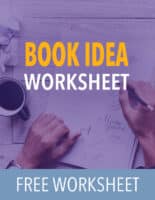
12 Exercises and Lessons To Become a Better Writer
How do you become a better writer? These posts share our best advice:
- Want to Be a Better Writer? Cut These 7 Words
- What I Mean When I Say I Am A Writer
- How to Become a Writer: 3 Simple Steps
- 72% of Writers Struggle With THIS
- 7 Lies About Becoming a Writer That You Probably Believe
- 10 Questions to Find Your Unique Writing Voice
- The Best Writing Book I’ve Ever Read
- The Best Way to Become a Better Writer
- The Creative Writer’s Toolkit: 6 Tools You Can’t Write Without
- Should You Write More or Write Better: Quantity vs Quality
- How to Become a Better Writer in One, Simple Step
- 11 Writing Tips That Will Change Your Life
6 Lessons and Exercises from Great Writers
If you want to be a writer, learn from the great writers who have gone before you:
- 23 Essential Quotes from Ernest Hemingway About Writing
- 29 Quotes that Explain How to Become a Better Writer
- 10 Lessons Dr. Seuss Can Teach Writers
- 10 Writing Tips from Ursula Le Guin
- Once Upon a Time: Pixar Prompt
- All the Pretty Words: Writing In the Style of Cormac McCarthy
12 Genre and Format Specific Writing Lessons and Exercises
Here are our best writing lessons for specific types of writing, including essays, screenplays, memoir, short stories, children's books, and humor writing:
- Writing an Essay? Here Are 10 Effective Tips
- How To Write a Screenplay: The 5 Step Process
- How to Write a Great Memoir: a Complete Guide
- How to Write a Short Story from Start to Finish
- How to Write a Thriller Novel
- How to Write a Children's Book
- How to Write a Love Story
- How to Write a Coming of Age Story or Book
- How to Write an Adventure Book
- 5 Key Elements for Successful Short Stories
- 4 Tips to Write a Novel That Will Be Adapted Into a Movie
- Humor Writing for People Who Aren’t Funny
14 Characterization Lessons and Exercises
Good characters are the foundation of good fiction. Here are our best lessons to create better characters:
- Character Development: How to Create Characters Audiences Will Love
- Writing Villains: 9 Evil Examples of the Villain Archetype
- How NOT to Introduce a New Character
- The Strongest Form of Characterization
- The Most Important Character Archetype
- How Do You Build A Strong Character In Your Writing?
- 75+ Antihero Examples and How to Use Them
- How to Explore Your Characters’ Motivations
- 8 Tips for Naming Characters
- The Protagonist: How to Center Your Story
- Heroes vs. Anti-Heroes: Which Is Right For Your Story?
- The Weakest Form of Characterization
- How to Write With an Accent
- How To Create a Character Sketch Using Scrivener
15 Grammar Lessons and Exercises
I talk to so many writers, some of whom are published authors, who struggle with grammar. Here are our best writing lessons on grammar:
- Is It Okay To End A Sentence With A Preposition?
- Contractions List: When To Use and When To Avoid
- Good vs. Well
- Connotation vs. Denotation
- Per Se vs. Per Say
- When You SHOULD Use Passive Voice
- When Do You Use “Quotation Marks”
- Polysyndeton and Asyndeton: Definition and Examples
- The Case Against Twilight
- Affect Versus Effect
- Stop Saying “Literally”
- What Is a Comma Splice? And Why Do Editors Hate Them?
- Intra vs. Inter: Why No One Plays Intermural Sports
- Alright and Alot: Words That Are Not Words
- The Poor, Misunderstood Semicolon
4 Journalism Lessons and Exercises
Want to be a journalist? Or even use techniques from journalism to improve your novel, essay, or screenplay? Here are our best writing lessons on journalism:
- Six Ways to Ask Better Questions In Interviews
- How Should You Interview Someone? Over Email? In Person?
- What If They Don’t Want to Talk to You?
- Eleven Habits of a Highly Effective Interviewers
16 Plot and Structure Lessons and Exercises
Want to write a good story? Our top plot and structure lessons will help:
- The Ten Types of Story and How to Master Them
- Points of a Story: 6 Plot Points Every Story Needs
- How to Shape a Story: The 6 Arcs
- 7 Keys To Write the Perfect First Line of a Novel
- The Secret to Creating Conflict
- 4 Tips to Avoid Having Your Short Story Rejected by a Literary Magazine
- 7 Steps to Creating Suspense
- 5 Elements of Storytelling
- 3 Important Rules for Writing Endings
- A Writer’s Cheatsheet to Plot and Structure
- Overcoming the Monster
- How to Satisfy Your Reader With a Great Ending
- Pow! Boom! Ka-Pow! 5 Tips to Write Fight Scenes
- The Dramatic Question and Suspense in Fiction
- How to Write a Memorable Beginning and Ending
- How to Write the Perfect First Page
6 Lessons and Exercises to Beat Writer's Block
Writer's block is real, and it can completely derail your writing. Here are six lessons to get writing again:
- How To Write Whether You Feel Like it Or Not
- This Fun Creative Writing Exercise Will Change Your Life
- When You Should Be Writing But Can't…
- What to do When Your Word Count is Too Low
- 7 Tricks to Write More with Less Willpower
- When You Don’t Know What to Write, Write About Your Insecurities
7 Literary Technique Lessons and Exercises
These writing and storytelling techniques will teach you a few tricks of the trade you may not have discovered before:
- 3 Tips to “Show, Don’t Tell” Emotions and Moods
- 3 Reasons to Write Stream of Consciousness Narrative
- 16 Observations About Real Dialogue
- Intertextuality As A Literary Device
- Why You Should Use Symbolism In Your Writing
- 6 Ways to Evoke Emotion in Poetry and Prose
- 3 Tips To Write Modern Allegorical Novels
- Symbol vs. Motif: What’s the Difference
3 Inspirational Writing Lessons and Exercises
Need some inspiration? Here are three of our most inspiring posts:
- Why We Write: Four Reasons
- You Must Remember Every Scar
- 17 Reasons to Write Something NOW
3 Publishing Blogging Lessons and Exercises
If you want to get published, these three lessons will help:
- The Secret to Writing On Your Blog Every Day
- How to Publish Your Book and Sell Your First 1,000 Copies
- How to Get Published in Literary Magazines
11 Writing Prompts
Need inspiration or just a kick in the pants to write. Try one of our top writing prompts :
- Grandfathers [writing prompt]
- Out of Place [writing prompt]
- Sleepless [writing prompt]
- Longing [writing prompt]
- Write About Yourself [writing prompt]
- 3 Reasons You Should Write Ghost Stories
- Road Trip [writing prompt]
- Morning [writing prompt]
- The Beach [writing prompt]
- Fall [writing prompt]
- How to Use Six-Word Stories As Writing Prompts
Is It Time To Begin Your Writing Practice?
It's clear that if you want to become a writer, you need to practice writing. We've created a proven process to practice your writing at The Write Practice, but even if you don't join our community, I hope you'll start practicing in some way today.
Personally, I waited far too long to start practicing and it set my writing back years.
How about you? Do you think practicing writing is important? Let me know in the comments section .
Choose one of the writing practice posts above. Then, read the lesson and participate in the writing exercise, posting your work in the Pro Practice Workshop . And if you post, please give feedback to your fellow writers who also posted their practices.
Have fun and happy practicing!
Joe Bunting
Joe Bunting is an author and the leader of The Write Practice community. He is also the author of the new book Crowdsourcing Paris , a real life adventure story set in France. It was a #1 New Release on Amazon. Follow him on Instagram (@jhbunting).
Want best-seller coaching? Book Joe here.

Join over 450,000 readers who are saying YES to practice. You’ll also get a free copy of our eBook 14 Prompts :
Popular Resources
Book Writing Tips & Guides Creativity & Inspiration Tips Writing Prompts Grammar & Vocab Resources Best Book Writing Software ProWritingAid Review Writing Teacher Resources Publisher Rocket Review Scrivener Review Gifts for Writers
Books By Our Writers

Now, Take Your Idea and Write a Book!
Enter your email to get a free 3-step worksheet and start writing your book in just a few minutes.
You've got it! Just us where to send your guide.
Enter your email to get our free 10-step guide to becoming a writer.
You've got it! Just us where to send your book.
Enter your first name and email to get our free book, 14 Prompts.

In-Class Writing Exercises
If you find yourself wishing your students would write more thoughtful papers or think more deeply about the issues in your course, this handout may help you. At the Writing Center, we work one-on-one with thousands of student writers and find that giving them targeted writing tasks or exercises encourages them to problem-solve, generate, and communicate more fully on the page. You’ll find targeted exercises here and ways to adapt them for use in your course or with particular students.
Writing requires making choices. We can help students most by teaching them how to see and make choices when working with ideas. We can introduce students to a process of generating and sorting ideas by teaching them how to use exercises to build ideas. With an understanding of how to discover and arrange ideas, they will have more success in getting their ideas onto the page in clear prose.
Through critical thinking exercises, students move from a vague or felt sense about course material to a place where they can make explicit the choices about how words represent their ideas and how they might best arrange them. While some students may not recognize some of these activities as “writing,” they may see that doing this work will help them do the thinking that leads to easier, stronger papers.
Brainstorming
In order to write a paper for a class, students need ways to move from the received knowledge of the course material to some separate, more synthesized or analyzed understanding of the course material. For some students this begins to happen internally or through what we call “thinking,” unvoiced mulling, sorting, comparing, speculating, applying, etc. that leads them to new perspectives, understanding, questions, reactions about the course material. This thinking is often furthered through class discussion and some students automatically, internally move from these initial sortings of ideas into complex, logical interpretations of material at this point. But, for more students, their thinking will remain an unorganized, vague set of ideas referring to the subject. Many will have trouble moving beyond this vague sense or simple reaction toward ideas that are more processed, complex, or what we often call “deep.” We can foster that move to a deeper understanding by providing opportunities to externalize and fix their ideas on paper so that they may both see their ideas and then begin to see the relationships between them. The following activities will help students both generate and clarify initial responses to course material:
- Free-writing. Find a clock, watch, or timer to help you keep track of time. Choose a topic, idea, question you would like to consider. It can be a specific detail or a broad concept-whatever you are interested in exploring at the moment. Write (on paper or on a computer) for 7-10 minutes non-stop on that topic. If you get stuck and don’t know what to say next, write “I’m stuck and don’t know what to say next…” or try asking yourself “what else?” until another idea comes to you. Do not concern yourself with spelling, grammar, or punctuation. Your goal is to generate as much as you can about the topic in a short period of time and to get used to the feeling of articulating ideas on the page. It’s ok if it’s messy or makes sense only to you. You can repeat this exercise several times, using the same or a variety of topics connecting to your subject. Read what you have written to see if you have discovered anything about your subject or found a line of questioning you’d like to pursue.
- Clustering/Webbing. Find a clock, watch, or timer to help you keep track of time. Put a word you’d like to explore in the center of a piece of paper and put a circle around it. As fast as you can, free-associate or jot down anywhere on the page as many words as you can think of associated with your center word. If you get stuck, go back to the center word and launch again. Speed is important and quantity is your goal. Don’t discount any word or phrase that comes to you, just put it down on the page. Jot words for between 5-10 minutes. When you are finished you will have a page filled with seemingly random words. Read around on the page and see if you have discovered anything or can see connections between any ideas.
- Listing. On a piece of paper list all the ideas you can think of connected to subjects you are considering exploring. Consider any idea or observation as valid and worthy of listing. List quickly and then set your list aside for a few minutes. Come back and read your list and do the exercise again.
- Cubing. This technique helps you look at your subject from six different points of view (imagine the 6 sides of a cube and you get the idea). Take your topic or idea and 1) describe it, 2) compare it, 3) associate it with something else you know, 4) analyze it (meaning break it into parts), 5) apply it to a situation you are familiar with, 6) argue for or against it. Write at a paragraph, page, or more about each of the six points of view on your subject.
- Journalistic questions. Write these questions down the left hand margin of a piece of paper: Who? What? Where? When? How? And Why? Think about your topic in terms of each question.
- What? So What? Now what? To begin to explore an idea first ask yourself, “What do I want to explore?” and write about that topic for a page or more. Then read what you have written and ask “So what?” of the ideas expressed so far. Again, write for a page or more. Finally ask yourself, “Now what?” to begin to think about what else you might consider or where you might go next with an idea.
- Defining terms. Although this suggestion is simple and may seem obvious, it is often overlooked. Write definitions for key terms or concepts in your own words. Find others’ articulations of the terms in your course readings, the dictionary, or in conversations, and compare these definitions to your own. Seek input from your instructor if you can’t get a working definition of a term for yourself.
- Summarizing positions. Sometimes it’s helpful to simply describe what you know as a way to solidify your own understanding of something before you try to analyze or synthesize new ideas. You can summarize readings by individual articles or you can combine what you think are like perspectives into a summary of a position. Try to be brief in your description of the readings. Write a paragraph or up to a page describing a reading or a position.
- Metaphor writing. Metaphors or similes are comparisons sometimes using the words “like” or “as.” For example, “writing is like swimming” or the “sky is as blue as map water” or “the keyboard wrinkled with ideas.” When you create a metaphor, you put one idea in terms of another and thereby create a new vision of the original idea. Sometimes it may be easier to create a metaphor or simile may help you understand your view of an idea before you can put it fully into sentences or paragraphs. Write a metaphor or simile and then explain to someone why your metaphor works or what it means to you.
- Applying ideas to personal circumstance or known situations. Sometimes ideas come clearest when you can put them in a frame that is meaningful to you. Take a concept from your reading assignments and apply it so a situation in your own life or to a current event with which you are familiar. You may not end up using this application in your final draft, but applying it to something you know will help you to understand it better and prepare you to analyze the idea as your instructor directs.
Once students have something on the page to work with, they can begin the decision-making process crucial to developing a coherent idea or argument. At this point, students will choose which ideas most appeal to them, which ideas seem to fit together, which ideas need to be set aside, and which ideas need further exploration. The following activities will help students make decisions as they shape ideas:
- Drawing diagrams. Sometimes it helps to look for the shape your ideas seem to be taking as you develop them. Jot down your main ideas on the page and then see if you can connect them in some way. Do they form a square? A circle? An umbrella with spokes coming down? A pyramid? Does one idea seem to sit on a shelf above another idea? Would equal signs, greater or less signs help you express the relationships you see between your idea? Can you make a flow chart depicting the relationships between your ideas?
- Making charts or piles. Try sorting your ideas into separate piles. You can do this literally by putting ideas on note cards or scraps of paper and physically moving them into different piles. You can do this on the page by cutting and pasting ideas into a variety of groups on the computer screen. You can also make charts that illustrate the relationships between ideas. Common charts include timelines, authors sitting around a dinner table, and comparison/contrast charts.
- Scrap pile. Be prepared to keep a scrap pile of ideas somewhere as you work. Some people keep this pile as a separate document as they work; others keep notes at the bottom of a page where they store scrap sentences or thoughts for potential use later on. Remember that it is sometimes important to throw out ideas as a way to clarify and improve the ones you are trying to develop along the way.
- Shifting viewpoints (role-playing). When you begin to feel you have some understanding of your idea, it sometimes helps to look at it from another person’s point of view. You can do this by role-playing someone who disagrees with your conclusions or who has a different set of assumptions about your subject. Make a list or write a dialogue to begin to reveal the other perspective.
- Applying an idea to a new situation. If you have developed a working thesis, test it out by applying it to another event or situation. If you idea is clear, it will probably work again or you will find other supporting instances of your theory.
- Problem/Solution writing. Sometimes it helps to look at your ideas through a problem-solving lens. To do so, first briefly outline the problem as you see it or define it. Make sure you are through in listing all the elements that contribute to the creation of the problem. Next, make a list of potential solutions. Remember there is likely to be more than one solution.
- Theory/application writing. If your assignment asks you to develop a theory or an argument, abstract it from the situation at hand. Does your theory hold through the text? Would it apply to a new situation or can you think of a similar situation that works in the same way? Explain your ideas to a friend.
- Defining critical questions. You may have lots of evidence or information and still feel uncertain what you should do with it or how you should write about it. Look at your evidence and see if you can find repeated information or a repeated missing piece. See if you can write a question or a series of questions that summarize the most important ideas in your paper. Once you have the critical questions, you can begin to organize your ideas around potential answers to the question.
- Explaining/teaching idea to someone else. Sometimes the most efficient way to clarify your ideas is to explain them to someone else. The other person need not be knowledgeable about your subject-in fact it sometimes helps if they aren’t familiar with your topic-but should be willing to listen and interrupt you when he or she doesn’t follow you. As you teach your ideas to someone else, you may begin to have more confidence in the shape of your ideas or you may be able to identify the holes in your argument and be more able to fix them.
- Lining up evidence. If you think you have a good idea of how something works, find evidence in your course material, through research in the library or on the web that supports your thinking. If your ideas are strong, you should find supporting evidence to corroborate your ideas.
- Rewriting idea. Sometimes what helps most is rewriting an idea over the course of several days. Take the central idea and briefly explain it in a paragraph or two. The next day, without looking at the previous day’s writing, write a new paragraph explaining your ideas. Try it again the next day. Over the course of three days, you may find your ideas clarifying, complicating, or developing holes. In all cases, you will have a better idea of what you need to do next in writing your draft.
As students have been working with their ideas, they have been making a series of choices about their ideas that will lead them to feel “ready” to put them in a more complete, coherent form; they will feel “ready to write” their ideas in something closer to the assignment or paper form. But for most, the tough moments of really “writing” begin at this point. They may still feel that they “have ideas” but have trouble “getting them on the page.” Some will suddenly be thrust into “writing a paper” mode and be both constrained and guided by their assumptions about what an assignment asks them to do, what academic writing is, and what prior experience has taught them about writing for teachers. These exercises may ease their entry into shaping their ideas for an assignment:
- Clarify all questions about the assignment. Before you begin writing a draft, make sure you have a thorough understanding of what the assignment requires. You can do this by summarizing your understanding of the assignment and emailing your summary to your TA or instructor. If you have questions about points to emphasize, the amount of evidence needed, etc. get clarification early. You might try writing something like, “I’ve summarized what I think I’m supposed to do in this paper, am I on the right track?
- Write a letter describing what the paper is going to be about. One of the simplest, most efficient exercises you can do to sort through ideas is to write a letter to yourself about what you are planning to write in your paper. You might start out, “My paper is going to be about….” And go on to articulate what evidence you have to back up your ideas, what parts still feel rough to you about your ideas. In about 20 minutes, you can easily have a good sense of what you are ready to write and the problems you still need to solve in your paper.
- Write a full draft. Sometimes you don’t know what you think until you see what you’ve said. Writing a full draft, even if you think the draft has problems, is sometimes important. You may find your thesis appears in your conclusion paragraph.
- Turn your ideas into a five-minute speech. Pretend you have to give a 5 minute speech to your classmates. How would you begin the speech? What’s your main point? What key information would you include? How much detail do you need to give the listener? What evidence will be most convincing or compelling for your audience?
- Make a sketch of the paper. Sometimes it helps to literally line up or order you evidence before you write. You can do so quickly by making a numbered list of your points. Your goal is something like a sketch outline—first I am going to say this; next I need to include this point; third I need to mention this idea. The ideas should flow logically from one point to the next. If they don’t-meaning if you have to backtrack, go on a tangent, or otherwise make the reader wait to see the relationship between ideas, then you need to continue tinkering with the list.
- Make an outline. If you have successfully used formal outlines in the past, use one to structure your paper. If you haven’t successfully used outlines, don’t worry. Try some of the other techniques listed here to get your ideas on the page
- Start with the easiest part. If you have trouble getting started on a draft, write what feels to you like the easiest part first. There’s nothing magic about starting at the beginning-unless that’s the easiest part for you. Write what you know for sure and a beginning will probably emerge as you write.
- Write the body of the paper first. Sometimes it’s helpful NOT to write the beginning or introductory paragraph first. See what you have to say in the bulk of your draft and then go back to craft a suitable beginning.
- Write about feelings about writing. Sometimes it’s helpful to begin a writing session by spending 5-10 minutes writing to yourself about your feelings about the assignment. Doing so can help you set aside uncertainty and frustration and help you get motivated to write your draft.
- Write with the screen turned off. If you are really stuck getting starting or in the middle of a draft, turn the monitor off and type your ideas. Doing so will prevent you from editing and critiquing your writing as you first produce it. You may be amazed at the quantity and quality of ideas you can produce in a short time. You’ll have to do some cleanup on the typos, but it may be well worth it if it allows you to bang out a draft.
- Write in alternatives (postpone decision-making). You may need to test out more than one idea before you settle into a particular direction for a paper. It’s actually more efficient to spend time writing in several directions i.e. trying out one idea for awhile, then trying out another idea, than it is to try to fit all of your ideas into one less coherent draft. Your writing may take the form of brief overviews that begin, “If I were going to write about XYZ idea, I would…” until you are able to see which option suits the assignment and your needs.
- Write with a timer. Sometimes what you need most is to get all of your ideas out on paper in a single sitting. To do so, pretend you are taking an essay exam. Set a timer for an appropriate amount of time (1 hour? 3 hours?) depending on the length of your draft. Assume that it will take you approximately 1 hour per page of text you produce. Set a goal for the portion of your draft you must complete during the allotted time and don’t get up from your seat until the timer goes off.
As students use language to shape ideas, they begin to feel the need to test their ideas or move beyond their own perspectives. Sometimes we have ideas that make good sense to us, but seem to lose or confuse readers as we voice them in conversation or on the page. Once students have a complete draft of a paper, they need ways to share their ideas to learn points where their ideas need further development. With feedback from an audience, students are better able to see the final decisions they still need to make in order for their ideas to reach someone. These decisions may be ones of word choice, organization, logic, evidence, and tone. Keep in mind that this juncture can be unsettling for some students. Having made lots of major decisions in getting their ideas down on the page, they may be reluctant to tackle another round of decision-making required for revising or clarifying ideas or sentences. Remind students that ideas don’t exist apart from words, but in the words themselves. They will need to be able to sell their ideas through the words and arrangement of words on the page for a specific audience.
- Talk your paper. Tell a friend what your paper is about. Pay attention to your explanation. Are all of the ideas you describe actually in the paper? Where did you start explaining your ideas? Does your paper match your description? Can the listener easily find all of the ideas you mention in your description?
- Ask someone to read your paper out loud to you. Ask a friend to read your draft out loud to you. What do you hear? Where does your reader stumble? Sound confused? Have questions? Did your reader ever get lost in your text? Did ideas flow in the order the reader expected them to? Was anything missing for the reader? Did the reader need more information at any point?
- Share your draft with your instructor. If you give them enough notice, most instructors will be willing to read a draft of a paper. It sometimes helps to include your own assessment of the draft when you share it with a teacher. Give them your assessment of the strengths and weaknesses of the draft, as you see it, to begin a conversation.
- Share your draft with a classmate. Arrange to exchange papers with a classmate several days before the due date. You can do so via email and make comments for revision using Word’s comment function.
- Look at your sentences. Often you will need to analyze your draft of the sentence level. To do so, break your paper into a series of discrete sentences by putting a return after each period or end punctuation. Once you have your paper as a list of sentences, you can more easily see and solve sentence level problems. Try reading the sentences starting with the last sentence of the draft and moving up. Doing so will take them out of context and force you to see them as individual bits of communication rather than familiar points.
- Discuss key terms in your paper with someone else. After you have completed a draft, it’s sometimes helpful to look back at the key terms you are using to convey your ideas. It’s easy, in the midst of thinking about an idea, to write in loaded language or code in which certain key words come to have special meaning for you that isn’t necessarily shared by a reader. If you suspect this is the case, talk about your key terms with a friend, and ask them to read your draft to see if the idea is adequately explained for the reader.
- Outline your draft. After you have a complete draft, go back and outline what you have said. Next to each paragraph write a word or phrase that summarizes the content of that paragraph. You might also look to see if you have topic sentences that convey the ideas of individual paragraphs. If you can’t summarize the content of a paragraph, you probably have multiple ideas in play in that paragraph that may need revising. Once you have summarized each paragraph, turn your summary words into a list. How does the list flow? Is it clear how one idea connects to the next?
- Underline your main point. Highlight the main point of your paper. It should probably be (although it will depend on the assignment) in one sentence somewhere on the first page. If it’s not, the reader will likely be lost and wondering what you paper is about as he or she reads through it. Your draft should not read like a mystery novel in which the reader has to wait until the end to have all the pieces fit together.
- Ask someone without knowledge of the course to read your paper. You can tell if your draft works by sharing it with someone outside of the context. If they can follow your ideas, someone inside the class will be able to as well.
- Ask a reader to judge specific elements of your paper. Share your draft with someone and ask them to read for something specific i.e. organization, punctuation, transitions. A reader will give more specific feedback to you if you give them some specific direction.
Implementing exercises
Many of these exercises can be used in short in-class writing assignments, as part of group work, or as incremental steps in producing a paper. If you’ve assigned an end-of-semester term paper, you may want to assign one or two activities from each of the four stages-brainstorming, organizing, drafting, editing-at strategic points throughout the semester. You could also give the students the list of exercises for each stage and ask them to choose one or two activities to complete at each point as they produce a draft.
If you’d like to discuss how these exercises might work in your course, talk about other aspects of student writing, contact Kimberly Abels [email protected] at the Writing Center.


Are you a learner at B1 English level (intermediate) ? This section offers writing practice to help you write simple connected text on familiar topics that are of personal interest. Texts include forum posts, reviews, messages, short essays and emails.
Each lesson has a preparation task, a model text with writing tips and three tasks to check your understanding and to practise a variety of writing skills. Make a start today.
Choose a writing lesson

A class forum
Learn how to write a post on a class forum.
- Read more about A class forum
- Log in or register to post comments

A professional profile
Learn how to write a professional profile.
- Read more about A professional profile

A report on a student meeting
Learn how to write a report.
- Read more about A report on a student meeting

A restaurant review
Learn how to write a restaurant review.
- Read more about A restaurant review

A thank-you message
Learn how to write a thank-you message to a colleague.
- Read more about A thank-you message

An email giving holiday advice
Learn how to write an email to give holiday advice.
- Read more about An email giving holiday advice

An email to explain an accommodation problem
Learn how to write an email to explain a problem with your accommodation.
- Read more about An email to explain an accommodation problem

An email to invite someone to a job interview
Learn how to write an email to invite someone to a job interview.
- Read more about An email to invite someone to a job interview

Describing a bar chart
Learn how to write about trends in a bar chart.
- Read more about Describing a bar chart

Describing charts
Learn how to write about charts.
- Read more about Describing charts


New Year's resolutions
Learn how to write about your New Year's resolutions.
- Read more about New Year's resolutions

Reflective writing
Learn how to write a reflective text about a learning experience.
- Read more about Reflective writing
Learn to write in English with confidence
Our online English classes feature lots of useful writing materials and activities to help you develop your writing skills with confidence in a safe and inclusive learning environment.
Practise writing with your classmates in live group classes, get writing support from a personal tutor in one-to-one lessons or practise writing by yourself at your own pace with a self-study course.
Explore courses
Online courses

Group and one-to-one classes with expert teachers.

Learn English in your own time, at your own pace.

One-to-one sessions focused on a personal plan.

Get the score you need with private and group classes.

The best writing exercises bring out our latent creativity. Especially if you ever feel stuck or blocked, making creative writing exercises part of your daily writing practice can be a great way to both hone your skills and explore new frontiers in your writing. Whether you’re a poet, essayist, storyteller, or genre-bending author, these free writing exercises will jumpstart your creative juices and improve your writing abilities.
24 of the Best Free Writing Exercises to Try Out Today
The best creative writing exercises will push you out of your comfort zone and get you to experiment with words. Language is your sandbox, so let’s build some sand castles with these exercises and writing prompts.
Write With Limitations
The English language is huge, complicated, and — quite frankly — chaotic. Writing with self-imposed limitations can help you create novel and inventive pieces.
What does “limitations” mean in this context? Basically, force yourself not to use certain words, descriptions, or figures of speech. Some writing exercises using limitations include the following:
- Write without using adverbs or adjectives.
- Write without using the passive voice – no “being verbs” whatsoever. (Also called “E-Prime” writing.)
- Write a story without using a common letter – just like Ernest Vincent Wright did .
- Write a poem where each line has six words.
- Write without using any pronouns.
Among exercises to improve writing skills, writing with limitations has the clearest benefits. This practice challenges your brain to think about language productively. Additionally, these limitations force you to use unconventional language – which, in turn, makes you write with lucidity, avidity, and invention.
Check Out Our Online Writing Courses!

30 Poems in 30 Days
with Ollie Schminkey
April 1st, 2024
This National Poetry Writing Month (NaPoWriMo), build community and get feedback on your work while writing a poem every day.

The Heart Remembers: Writing About Loss
with Charlotte Maya
April 3rd, 2024
How can we organize grief and loss into language? Honor your feelings and write moving essays in this heart-centered creative nonfiction class.

Let It Rip: The Art of Writing Fiery Prose
with Giulietta Nardone
You'll write prose that gets folks so hot and bothered they won't be able to put it down, even if it isn't about sex.

Write Your Novel! The Workshop With Jack
with Jack Smith
Get a good start on a novel in just ten weeks, or revise a novel you’ve already written. Free your imagination, move steadily ahead and count the pages!

Writing the Body: A Nonfiction Craft Seminar
with Margo Steines
April 9th, 2024
The weird and wild body is a rich site of exploration in creative nonfiction. Explore the questions, stories, and lessons your body holds in this seminar with Margo Steines.
Freewriting & Stream of Consciousness
What do you do when the words just don’t come out? How can you write better if you can’t seem to write at all? One of the best poetry exercises, as well as writing exercises in general, is to start your day by freewriting.
Freewriting, also known as “stream of consciousness writing,” involves writing your thoughts down the moment they come. There’s no filtering what you write, and no controlling what you think: topicality, style, and continuity are wholly unnecessary in the freewriting process. While the idea of freewriting seems easy, it’s much harder than you think – examining your thoughts without controlling them takes a while to master, and the impulse to control what you write isn’t easy to tame. Try these exercises to master the skill:
- Do a timed freewrite. Start with five minutes.
- Freewrite until you fill up the entirety of something – an envelope, a receipt, a postcard, etc.
- Freewrite after meditating.
- Freewrite off of the first word of today’s newspaper.
Among daily writing exercises, freewriting is one of the best writing exercises. Poets can use freewritten material as inspiration for their poetry. Prose writers can also find inspiration for future stories from the depths of their consciousnesses. Start your writing day with freewriting, and watch your creativity blossom.
Copy What You Read
Plagiarism is still off the table; however, you can learn a lot by paying attention to how other people write. This is what we call “reading like a writer.”
Reading like a writer means paying attention to the craft elements that make an excellent piece of literature work. Good writing requires different writing styles, figurative language, story structures, and/or poetry forms, as well as key word choice.
When you notice these craft elements, you can go ahead and emulate them in your own work. As a fiction writer , you might be drawn to the way Haruki Murakami weaves folklore into his stories, and decide to write a story like that yourself. Or, as a poet, you might be inspired by Terrance Hayes’ Golden Shovel form — enough so that you write a Golden Shovel yourself.
- Read a favorite poem, and write your own poem in the same poetic form.
- Blackout poetry: take another poem, cross out words you don’t want to use, circle words you do, and write a poem based on the circled words.
- Copy a single sentence from a favorite novel, and write a short-short story with it.
Among free writing exercises, this is a great way to learn from the best. The best kinds of exercises to improve writing skills involve building upon the current canon of works — as Isaac Newton said, you achieve something great by “standing on the shoulders of giants.”
Write From Different Perspectives
The conventional advice given to writers is to “write what you know.” We couldn’t disagree with that statement more. The best creative works force both the writer and the reader to consider new perspectives and learn something new; writing from a new point-of-view makes for a great exercise in expanding your creative limits.
Try these ideas as daily writing exercises:
- Write a story with the same plot, but with two or more perspectives. For example, you could write a lover’s quarrel from two different view points.
- Write from the point-of-view of a famous historical figure.
- Write a story or poem from the perspective of an object: a statue, a doll, a roomba, etc.
- Write from the perspective of a person you dislike.
While playing with perspective makes for a great fiction writing exercise , poets and essayists can do this too. Patricia Smith’s poem “Skinhead,” for example, is a persona piece written from the perspective of a white nationalist, but the poem clearly condemns the speaker’s beliefs.
Thus, perspective writing also works as a poetry exercise and an essay writing practice exercise . If you’re stuck in your own head, try writing in someone else’s!
Write Metaphor Lists
All creative writers need figurative language. While metaphors, similes, and synecdoches are more prominent in poetry , prose writers need the power of metaphor to truly engross their reader. Among both exercises to improve writing skills and fun writing exercises for adults, writing metaphor lists is one of the best writing exercises out there.
A metaphor list is simple. On a notebook, create two columns. In one column, write down only concrete nouns. Things like a pillow, a tree, a cat, a cloud, and anything that can be perceived with one of the five senses.
In the other list, write down only abstract ideas. Things like love, hate, war, peace, justice, closure, and reconciliation — anything that is conceptual and cannot be directly perceived.
Now, choose a random noun and a random concept, and create a metaphor or simile with them. Delve into the metaphor and explain the comparison. For example, you might say “Love is like a pillow — it can comfort, or it can smother.”
Once you’ve mastered the metaphor list, you can try the following ideas to challenge yourself:
- Create a coherent poem out of your metaphor list.
- Turn your metaphor list into a short story.
- Try making lists with a different figurative language device, such as personification, pathetic fallacy, or metonymy.
Any free creative writing exercise that focuses on figurative language can aid your writing immensely, as it helps writers add insight and emotionality to their work. This is an especially great creative writing exercise for beginners as they learn the elements of style and language.
Daily Journaling
Of course, the best way to improve your creative writing skills is simply to write every day. Keeping a daily journal is a great way to exercise your writing mind. By sitting down with your personal observations and writing without an agenda or audience, a daily writing practice remains one of the best writing exercises , regardless of your genre or level of expertise.
Consider these ideas for your daily journal:
- Track your mood and emotions throughout the day. Write those emotions in metaphor — avoid commonplace adjectives and nouns.
- Write about your day from the second- or third-person.
- Journal your day in verse. Use stanzas, line breaks, and figurative language.
- Write about your day backwards.
- Write about your day using Freytag’s pyramid . Build up to a meaningful climax, even if nothing significant seemed to happen today.
Writing Exercises: Have Fun with Them!
Many of these writing exercises might feel challenging at first—and that’s a good thing! You will unlock new ideas and writing strengths by struggling through these creative challenges. The main point is to have fun with them and use them to explore within your writing, without indulging too many monologues from your inner critic.
Are you looking for more exercises to improve your writing skills? Our instructors can offer prompts, illuminating lectures, one-to-one feedback, and more to help you improve your craft. Check out our upcoming creative writing courses , and let’s put these skills to practice.
Sean Glatch
Thank you for this. I’ve been stuck for months—more than that, actually, and you’d think that a pandemic stay-at-home would be the perfect time to do some writing. But no. I’m as stuck as ever. In fact, the only time I seem able to write consistently and well is when I’m taking one of your classes! I’m still saving my pennies, but these exercises will hopefully get me writing in the meantime. Thanks again!
Hi Kathy, I’m glad to hear some of these tips might spark your creativity 🙂 I feel the same way, I was hoping the stay-at-home order might spark some creativity, but we shouldn’t push ourselves too hard – especially in the midst of a crisis.
The best part about writing: all you have to do is try, and you’ve already succeeded. Good luck on your writing endeavors!
Bravo….!What a great piece! Honestly I learnt a lot here!
I picked interest in poetry just a week ago after reading a beautiful piece which captivated my mind into the world of writing. I’d love to write great poems but I don’t know anything about poetry, I need a coach, a motivator and an inspiration to be able to do this. This piece really helped me but I will appreciate some more tips and help from you or anyone else willing to help, I am really fervid about this.
Hi Anthony,
Thanks for your comment! I’m so excited for you to start your journey with poetry. We have more advice for poetry writing at the articles under this link: https://writers.com/category/poetry
Additionally, you might be interested in two of our upcoming poetry courses: Poetry Workshop and How to Craft a Poem .
If you have any questions, please feel free to email us at [email protected] . Many thanks, and happy writing!
[…] 24 Best Writing Exercises to Become a Better Writer | writers.com […]
Hi, kinsey there. Thanks for giving information. it is a very informative blog and i appreciate your effort to write a blog I am also a writer and i like these type of blogs everyone takes more knowledge to check out my essay writing website
As a writer, I often struggle to break free from the chains of writer’s block, but this blog has gifted me with a map of inspiration to navigate through those creative storms. It’s like being handed a box of enchanted writing exercises
Leave a Comment Cancel Reply
Save my name, email, and website in this browser for the next time I comment.
Search form

Here you can find activities to practise your writing skills. You can improve your writing by understanding model texts and how they're organised.
The learning materials in this section are written and organised by level. There are different types of model texts, with writing tips and interactive exercises that practise the writing skills you need to do well at school, get good marks in your tests and exams, and get more out of your free-time activities.
Take our free online English test to find out which level to choose. Select your level, from beginner (CEFR level A1) to advanced (CEFR level C1), and improve your writing skills at any time and at your own speed.
Choose a level

Are you an elementary (CEFR level A1) learner of English? Practise and improve your writing skills with these texts and exercises.

Are you a pre-intermediate (CEFR level A2) learner of English? Practise and improve your writing skills with these texts and exercises.

Are you an intermediate (CEFR level B1) learner of English? Practise and improve your writing skills with these texts and exercises.

Are you an upper intermediate (CEFR level B2) learner of English? Practise and improve your writing skills with these texts and exercises.

Are you an advanced (CEFR level C1) learner of English? Practise and improve your writing skills with these texts and exercises.

Sign up to our newsletter for LearnEnglish Teens
We will process your data to send you our newsletter and updates based on your consent. You can unsubscribe at any time by clicking the "unsubscribe" link at the bottom of every email. Read our privacy policy for more information.
TOEFL iBT ® Test
The premier test of academic English communication
Learn more by selecting any step in your TOEFL iBT ® journey.
TOEFL iBT Test Writing Section
The TOEFL iBT test Writing section measures your ability to write in English in an academic setting, and to present your ideas in a clear, well-organized way.
There are two writing tasks.
- Integrated writing task (20 minutes) — read a short passage and listen to a short lecture, then write in response to what you read and listened to.
- Writing for an Academic Discussion task (10 minutes) — state and support an opinion in an online classroom discussion.
You'll type your responses on a computer keyboard.
Test time: It should take about 29 minutes to complete the Writing section.
Scoring: Writing tasks are scored based on the Writing Scoring Guides (Rubrics) (PDF) by a combination of AI scoring and certified human raters. Raw scores are converted to a scaled section score of 0–30.
Practice Your Writing Skills
Explore a variety of official prep offerings to practice your English-writing skills with TOEFL ® TestReady ™ . Get insights and feedback on your grammar, usage, mechanics and more.
Writing videos
Watch these videos to learn about the questions in the Writing section, plus helpful tips.
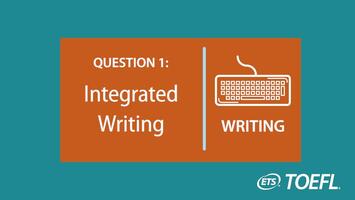
Question 1: Integrated Writing
Read a passage and listen to a lecture. Then write a response comparing them.
View Transcript
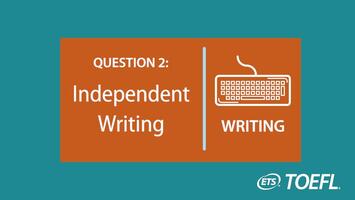
Question 2: Writing for an Academic Discussion
Share your opinion in an online discussion with a professor and other students.
Do you need to be an expert on the topics?
The writing tasks measure your English proficiency, so you don't need deep knowledge on a specific topic to get a high score. Score raters recognize that each essay is a first draft, and you can receive a high score with an essay that contains some errors.
IELTS Preparation with Liz: Free IELTS Tips and Lessons, 2024
- Test Information FAQ
- Band Scores
- IELTS Candidate Success Tips
- Computer IELTS: Pros & Cons
- How to Prepare
- Useful Links & Resources
- Recommended Books
- Writing Task 1
- Writing Task 2
- Speaking Part 1 Topics
- Speaking Part 2 Topics
- Speaking Part 3 Topics
- 100 Essay Questions
- On The Day Tips
- Top Results
- Advanced IELTS
100 IELTS Essay Questions
Below are practice IELTS essay questions and topics for writing task 2. The 100 essay questions have been used many times over the years. The questions are organised under common topics and essay types. IELTS often use the similar topics for their essays but change the wording of the essay question.
In order to prepare well for writing task 2, you should prepare ideas for common topics and then practise applying them to the tasks given (to the essay questions). Also see model essays and tips for writing task 2.
Below you will find:
- Essay Questions By Topic
- Essay Questions by Essay Type
Please also note that my new Grammar E-book is now available in my store along with my Ideas for Essay Topics E-book and Advanced Writing Lessons. To visit store, click here: Liz’s Store
1) Common IELTS Essay Questions
IELTS practice essay questions divided by topic. These topics have been reported by IELTS students in their tests. Essay questions have been recreated as accurately as possible.
- Art (5 essay questions)
- Business & Money (17 essay questions)
- Communication & Personality (20 essay questions)
- Crime & Punishment (12 essay questions)
- Education (17 essay questions)
- Environment (12 essay questions)
- Family & Children (8 essay questions)
- Food & Diet (13 essay questions)
- Government (6 essay questions)
- Health (9 essay questions)
- Housing, Buildings & Urban Planning (8 essay questions)
- Language (6 essay questions)
- Leisure (1 essay question)
- Media & Advertising (12 essay questions)
- Reading (5 essay questions)
- Society (10 essay questions)
- Space Exploration (3 questions)
- Sport & Exercise (6 essay questions)
- Technology (6 essay questions)
- Tourism and Travel (11 essay questions)
- Transport (7 essay questions)
- Work (17 essay questions)
2) IELTS Essay Questions by Essay Type
There are 5 main types of essay questions in IELTS writing task 2 (opinion essays, discussion essay, advantage/disadvantage essays, solution essay and direct question essays). Click on the links below to see some sample essay questions for each type.
- Opinion Essay Questions
- Discussion Essay Questions
- Solution Essay Questions
- Direct Questions Essay Titles
- Advantage / Disadvantage Essay Questions
………………………………
FREE SUBSCRIBE : Get New Lessons & Posts by Email
Type your email…
Advanced IELTS Lessons & E-books

Recent Lessons
50% discount advanced ielts lessons & e-books final day, answers to age group bar chart lesson, ielts bar chart of age groups 2024, 50% discount: advanced ielts lessons & e-books, ielts topic: urban planning, ielts listening transcripts: when and how to use them.

Click Below to Learn:
- IELTS Test Information
Copyright Notice
Copyright © Elizabeth Ferguson, 2014 – 2024
All rights reserved.
Privacy Policy & Disclaimer
- Click here: Privacy Policy
- Click here: Disclaimer
Return to top of page
Copyright © 2024 · Prose on Genesis Framework · WordPress · Log in
English Practice Downloadable PDF Grammar and Vocabulary Worksheets
Essay writing (b1).
- ESS012 - Social Networking Websites
- ESS011 - School and Part-Time Work
- ESS010 - Discrimination of Women
- ESS009 - Home By Ten ?
- ESS008 - Extreme Activities
- ESS007 - Becoming Happy By Helping Others
- ESS006 - Time Management
- ESS005 - Immigrants In A New Country
- ESS004 - Teenagers and Their Free Time
- ESS003 - The Importance of Learning Foreign Languages
- ESS002 - Daily Exercise in Schools
- ESS001 - Healthy Nutrition
- Adjective - Adverb
- Gerund and Infinitive
- Modal Verbs
- Reported Speech
- Passive Voice
- Definite and Indefinite Articles
- Quantifiers
- Relative Clauses
- Prepositions
- Questions and Negations
- Question Tags
- Language in Use
- Word Formation
- General Vocabulary
- Topical Vocabulary
- Key Word Transformation
News Articles
- Letters and Emails
- Blog Posts and Comments
- Connectives and Linking Phrases
- Phrasal Verbs
- Collocations and Phrases
Listening Comprehension
Privacy policy.

10 fun writing activities for the reluctant writer
10 FUN WRITING ACTIVITIES FOR THE RELUCTANT WRITER
No doubt about it – writing isn’t easy. It is no wonder that many of our students could be described as ‘reluctant writers’ at best. It has been estimated by the National Association of Educational Progress that only about 27% of 8th and 12th Grade students can write proficiently.
As educators, we know that regular practice would go a long way to helping our students correct this underachievement, and sometimes, writing prompts just aren’t enough to light the fire.
But how do we get students, who have long since been turned off writing, to put pen to paper and log in the requisite time to develop their writing chops?
The answer is to make writing fun! In this article, we will look at some creative writing activities where we can inject a little enjoyment into the writing game.

COMPLETE DIGITAL AND PRINT FUN WRITING UNIT
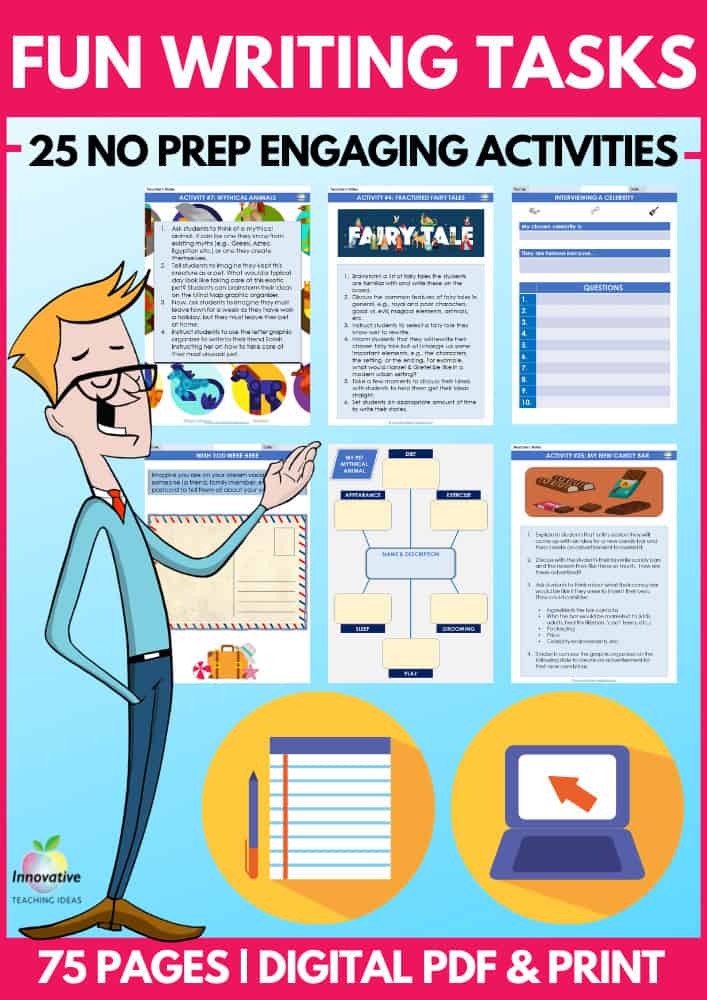
25 FUN and ENGAGING writing tasks your students can complete INDEPENDENTLY with NO PREP REQUIRED that they will absolutely love.
Fully EDITABLE and works as with all DIGITAL PLATFORMS such as Google Classroom, or you can PRINT them for traditional writing tasks.
1. Poetry Scavenger Hunt
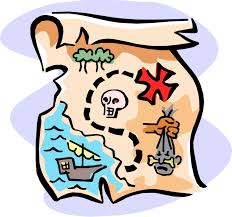
The Purpose: This activity encourages students to see the poetry in the everyday language around them while helpfully reinforcing their understanding of some of the conventions of the genre.
The Process: Encourage students to ‘scavenge’ their school, home, and outside the community for snippets of language they can compile into a piece of poetry or a poetic collage. They may copy down or photograph words, phrases, and sentences from signs, magazines, leaflets or even snippets of conversations they overhear while out and about.
Examples of language they collect may range from the Keep Out sign on private property to the destination on the front of a local bus.
Once students have gathered their language together, they can work to build a poem out of the scraps, usually choosing a central theme to give the piece cohesion. They can even include corresponding artwork to enhance the visual appeal of their work, too, if they wish.
The Prize: If poetry serves one purpose, it is to encourage us to look at the world anew with the fresh eyes of a young child. This activity challenges our students to read new meanings into familiar things and put their own spin on the language they encounter in the world around them, reinforcing the student’s grasp on poetic conventions.
2. Story Chains
The Purpose: Writing is often thought of as a solitary pursuit. For this reason alone, it can be seen as a particularly unattractive activity by many of our more gregarious students. This fun activity exercises students’ understanding of writing structures and engages them in fun, creative collaboration.
The Process: Each student starts with a blank paper and pen. The teacher writes a story prompt on the whiteboard. You’ll find some excellent narrative writing prompts here . For example, each student spends two minutes using the writing prompt to kick-start their writing.
When they have completed this part of the task, they will then pass their piece of paper to the student next to them. Students then continue the story from where the previous student left off for a given number of words, paragraphs, or length of time.
If organized correctly, you can ensure students receive their own initial story back at the end for the writing of the story’s conclusion .
The Prize: This fun writing activity can be used effectively to reinforce student understanding of narrative writing structures, but it can also be fun to try with other writing genres.
Working collaboratively motivates students to engage with the task, as no one wants to be the ‘weak link’ in the finished piece. But, more than that, this activity encourages students to see writing as a communicative and creative task where there needn’t be a ‘right’ answer. This encourages students to be more willing to take creative risks in their work.
3. Acrostic Associations

The Purpose: This is another great way to get students to try writing poetry – a genre that many students find the most daunting.
The Process: Acrostics are simple poems whereby each letter of a word or phrase begins a new line in the poem. Younger students can start off with something very simple, like their own name or their favorite pet and write this vertically down the page.
Older students can take a word or phrase related to a topic they have been working on or have a particular interest in and write it down on the page before beginning to write.
The Prize: This activity has much in common with the old psychiatrist’s word association technique. Students should be encouraged to riff on ideas and themes generated by the focus word or phrase. They needn’t worry about rhyme and meter and such here, but the preset letter for each line will give them some structure to their meanderings and require them to impose some discipline on their wordsmithery, albeit in a fun and loose manner.
4. The What If Challenge

The Purpose: This challenge helps encourage students to see the link between posing interesting hypothetical questions and creating an entertaining piece of writing.
The Process: To begin this exercise, have the students come up with a single What If question, which they can then write down on a piece of paper. The more off-the-wall, the better!
For example, ‘What if everyone in the world knew what you were thinking?’ or ‘What if your pet dog could talk?’ Students fold up their questions and drop them into a hat. Each student picks one out of the hat before writing on that question for a suitable set amount of time.
Example What If Questions
- “What if you woke up one day and found out that you had the power to time travel?”
- “What if you were the last person on Earth? How would you spend your time?”
- “What if you were granted three wishes, but each one came with a terrible consequence?”
- “What if you discovered a secret portal to another world? Where would you go, and what would you do?”
- “What if you woke up one day with the ability to communicate with animals? How would your life change?”
The Prize: Students are most likely to face the terror of the dreaded Writer’s Block when they are faced with open-ended creative writing tasks.
This activity encourages the students to see the usefulness of posing hypothetical What If questions, even random off-the-wall ones, for kick-starting their writing motors.
Though students begin by answering the questions set for them by others, please encourage them to see how they can set these questions for themselves the next time they suffer from a stalled writing engine.
5. The Most Disgusting Sandwich in the World

The Purpose: Up until now, we have looked at activities encouraging our students to have fun with genres such as fiction and poetry. These genres being imaginative in nature, more easily lend themselves to being enjoyable than some of the nonfiction genres.
But what about descriptive writing activities? In this activity, we endeavor to bring that same level of enjoyment to instruction writing while also cleverly reinforcing the criteria of this genre.
The Process: Undoubtedly, when teaching instruction writing, you will at some point cover the specific criteria of the genre with your students.
These will include things like the use of a title, numbered or bulleted points, time connectives, imperatives, diagrams with captions etc. You will then want the students to produce their own piece of instruction writing or procedural text to display their understanding of how the genre works.
But, why not try a fun topic such as How to Make the Most Disgusting Sandwich in the World rather than more obvious (and drier!) topics such as How to Tie Your Shoelaces or How to Make a Paper Airplane when choosing a topic for your students to practice their instruction writing chops?
Example of a Most disgusting Sandwich Text
The Prize: As mentioned, with nonfiction genres, in particular, we tend to suggest more banal topics for our students to work on while internalizing the genre’s criteria. Enjoyment and acquiring practical writing skills need not be mutually exclusive.
Our students can just as quickly, if not more easily, absorb and internalize the necessary writing conventions while engaged in writing about whimsical and even nonsensical topics.
if your sandwich is entering the realm of horror, be sure to check our complete guide to writing a scary story here as well.
DAILY WRITING JOURNAL UNIT FOR ALL TEXT TYPES

Our FUN DAILY QUICK WRITE TASKS will teach your students the fundamentals of CREATIVE WRITING across all text types. Packed with 52 ENGAGING ACTIVITIES
6. Diary Entry of a Future Self

The Purpose: This activity allows students to practice personal writing within the conventions of diary/journal writing. It also challenges them to consider what their world will be like in the future, perhaps stepping a foot into the realm of science fiction.
The Process: Straightforwardly, after working through some examples of diary or journal writing, and reviewing the various criteria of the genre, challenge the students to write an entry at a given milestone in the future.
This may be when they leave school, begin work, go to university, get married, have kids, retire etc. You may even wish to get the students to write an entry for a series of future milestones as part of a more extended project.
Example of Message to Future Me Text
The Prize: Students will get a chance here to exercise their understanding of this type of writing , but more than that, they will also get an opportunity to exercise their imaginative muscles too. They will get to consider what shape their future world will take in this engaging thought experiment that will allow them to improve their writing too.
7. Comic Strip Script
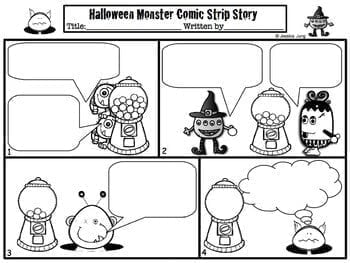
The Purpose: Give your students the chance to improve their dialogue writing skills and to work on their understanding of character development in this fun activity which combines writing with the use of a series of visual elements.
The Process: There are two ways to do this activity. The first requires you to source, or create, a comic strip minus the dialogue the characters are speaking. This may be as straightforward as using whiteout to erase the words in speech bubbles and making copies for your students to complete.
Alternatively, provide the students with photographs/pictures and strips of cards for them to form their own action sequences . When students have their ‘mute’ strips, they can begin to write the dialogue/script to link the panels together.
The Prize: When it comes to writing, comic strips are probably one of the easier sells to reluctant students! This activity also allows students to write for speech. This will stand to them later when they come to produce sections of dialogue in their narrative writing or when producing play or film scripts.
They will also develop their visual literacy skills as they scan the pictures for clues of tone and context before they begin their writing.
Keep It Fun
Just as we should encourage our students to read for fun and wider educational benefits, we should also work to instil similar attitudes towards writing. To do this means we must work to avoid always framing writing in the context of a chore, that bitter pill that must be swallowed for the good of our health.
There is no getting away from the fact that writing can, at times, be laborious. It is time-consuming and, for most of us, difficult at the best of times. There is a certain, inescapable amount of work involved in becoming a competent writer.
That said, as we have seen in the activities above, with a bit of creative thought, we can inject fun into even the most practical of writing activities . All that is required is a dash of imagination and a sprinkling of effort.
8. Character Interviews

The Purpose: Character interviews as writing activities are excellent for students because they encourage creative thinking, character development, and empathy. The purpose of this activity is to help students delve deeper into the minds of the characters they are creating in their stories or reading about in literature. By conducting interviews with these characters, students gain a better understanding of their personalities, motivations, and perspectives.
The Process of character interviews involves students imagining themselves as interviewers and their characters as interviewees. They can either write out the questions and answers in a script-like format or write a narrative where the character responds to the questions in their own voice.
The Prize: Through character interviews, students learn several valuable skills:
- Character Development: By exploring various aspects of their characters’ lives, backgrounds, and experiences, students can develop more well-rounded and authentic characters in their stories. This helps make their fictional creations more relatable and engaging to readers.
- Empathy and Perspective: Conducting interviews requires students to put themselves in their characters’ shoes, considering their thoughts, emotions, and struggles. This cultivates empathy and a deeper understanding of human behavior, which can be applied to real-life situations as well.
- Voice and Dialogue: In crafting the character’s responses, students practice writing authentic dialogue and giving their characters unique voices. This skill is valuable for creating dynamic and believable interactions between characters in their stories.
- Creative Expression: Character interviews provide a creative outlet for students to let their imaginations run wild. They can explore scenarios that may not appear in the main story and discover new aspects of their characters they might not have considered before.
- Critical Thinking: Formulating questions for the interview requires students to think critically about their characters’ personalities and backgrounds. This exercise enhances their analytical skills and storytelling abilities.
Overall, character interviews are a dynamic and enjoyable way for students to delve deeper into the worlds they create or the literature they read. It nurtures creativity, empathy, and writing skills, empowering students to become more proficient and imaginative writers.
9. The Travel Journal

The Purpose: Travel journal writing tasks are excellent for students as they offer a unique and immersive way to foster creativity, cultural awareness, and descriptive writing skills. The purpose of this activity is to allow students to embark on a fictional or real travel adventure, exploring new places, cultures, and experiences through the eyes of a traveller.
The process of a travel journal writing task involves students assuming the role of a traveler and writing about their journey in a journal format. They can describe the sights, sounds, tastes, and emotions they encounter during their travels. This activity encourages students to use vivid language, sensory details, and expressive writing to bring their travel experiences to life.
The Prize: Through travel journal writing tasks, students will learn several valuable skills:
- Descriptive Writing: By describing their surroundings and experiences in detail, students enhance their descriptive writing skills, creating engaging and vivid narratives.
- Cultural Awareness: Travel journals encourage students to explore different cultures, customs, and traditions. This helps broaden their understanding and appreciation of diversity.
- Empathy and Perspective: Through writing from the perspective of a traveler, students develop empathy and gain insight into the lives of people from different backgrounds.
- Research Skills: For fictional travel journals, students might research specific locations or historical periods to make their narratives more authentic and accurate.
- Reflection and Self-Expression: Travel journals offer a space for students to reflect on their own emotions, thoughts, and personal growth as they encounter new experiences.
- Creativity and Imagination: For fictional travel adventures, students get to unleash their creativity and imagination, envisioning fantastical places and scenarios.
- Language and Vocabulary: Travel journal writing tasks provide opportunities for students to expand their vocabulary and experiment with expressive language.
Overall, travel journal writing tasks inspire students to become more observant, empathetic, and skilled writers. They transport them to new worlds and foster a sense of wonder and curiosity about the world around them. Whether writing about real or imaginary journeys, students develop a deeper connection to the places they encounter, making this activity both educational and enjoyable.
10. The Fairy Tale Remix

The Purpose: A fairy tale remix writing activity is a fantastic creative exercise for students as it allows them to put a unique spin on classic fairy tales, fostering imagination, critical thinking, and storytelling skills. This activity encourages students to think outside the box, reinterpret well-known tales, and explore their creative potential by transforming traditional narratives into something entirely new and exciting.
The process of a fairy tale remix writing activity involves students selecting a familiar fairy tale and altering key elements such as characters, settings, plot twists, or outcomes. They can modernize the story, change the genre, or even mix different fairy tales together to create a wholly original piece.
The Prize: Through this activity, students will learn several valuable skills:
- Creative Thinking: Students exercise their creativity by brainstorming unique concepts and ideas to remix the fairy tales, encouraging them to think imaginatively.
- Critical Analysis: Analyzing the original fairy tale to identify essential elements to keep and areas to remix helps students develop critical thinking skills and understand storytelling structures.
- Writing Techniques: Crafting a remix requires students to use descriptive language, engaging dialogue, and well-developed characters, helping them hone their writing techniques.
- Perspective and Empathy: Remixing fairy tales allows students to explore different character perspectives, promoting empathy and understanding of diverse points of view.
- Genre Exploration: Remixing fairy tales can introduce students to various genres like science fiction, fantasy, or mystery, expanding their literary horizons.
- Originality: Creating their own narrative twists and unexpected plots encourages students to take ownership of their writing and develop a unique voice.
- Storytelling: Students learn the art of compelling storytelling as they weave together familiar elements with innovative ideas, captivating their readers.
By remixing fairy tales, students embark on a creative journey that empowers them to reimagine well-loved stories while honing their writing skills and imaginative prowess. It’s an engaging and enjoyable way for students to connect with literature, explore new possibilities, and showcase their storytelling talents.
MORE FUN WRITING ACTIVITIES FOR YOU
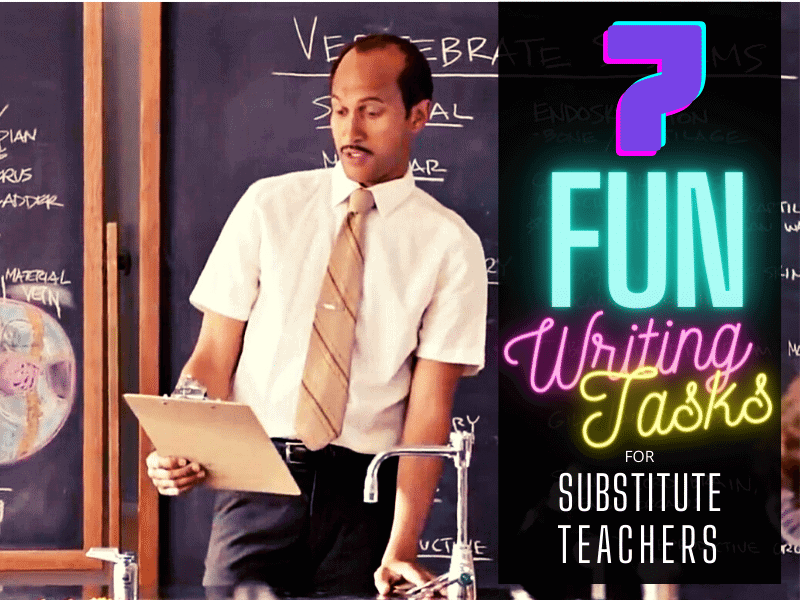
7 Fun Writing Sub Plans for Substitute Teachers

25 Fun Christmas Writing Tasks for Students

5 Fun Seasonal Writing Activities Students and Teachers Love

10 Fun Classroom Writing Games to Improve Literacy Skills
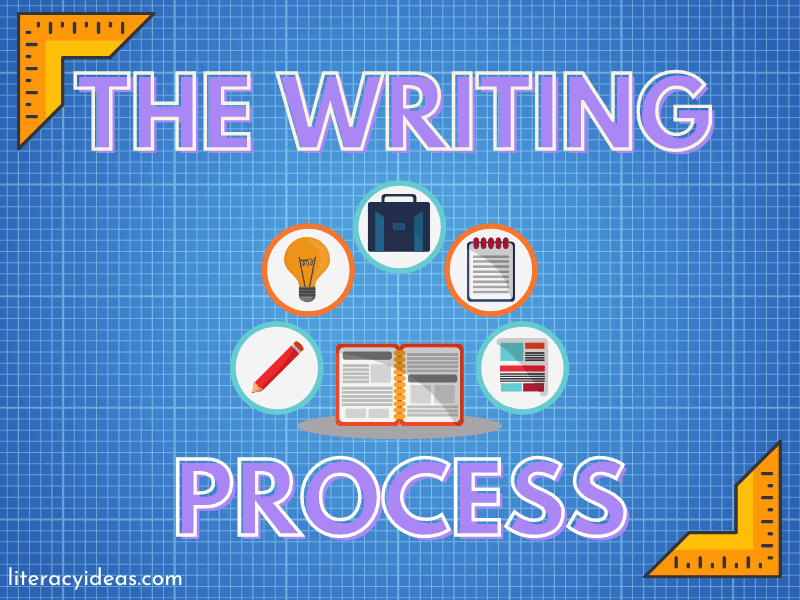
The Writing Process
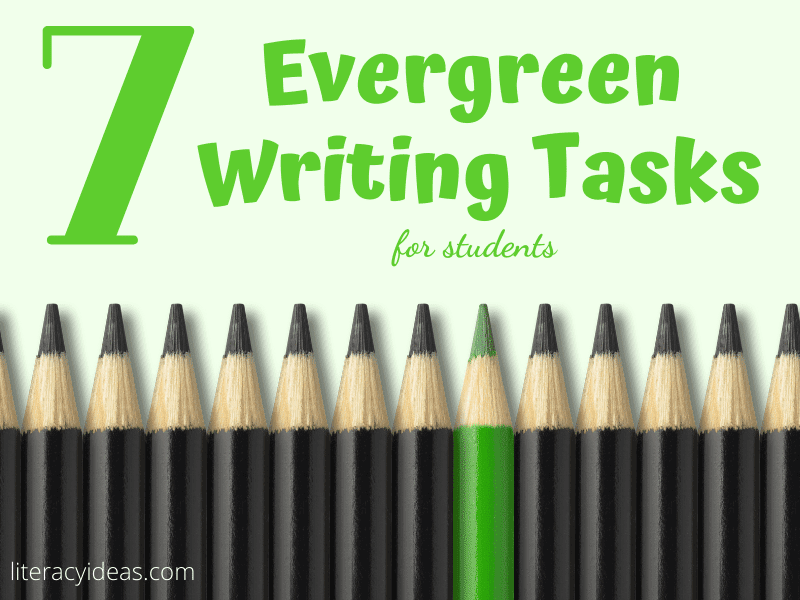
7 Evergreen Writing Activities for Elementary Students
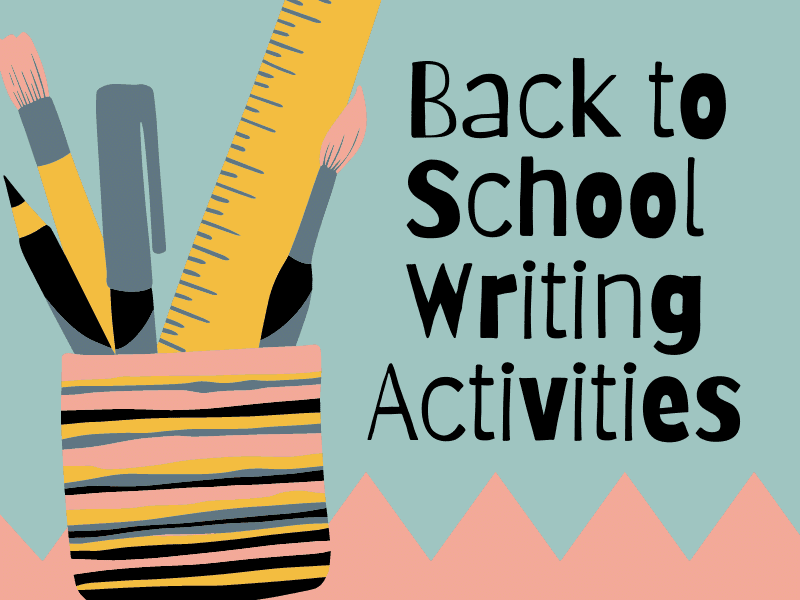
9 Fun First Day at School Writing Activities
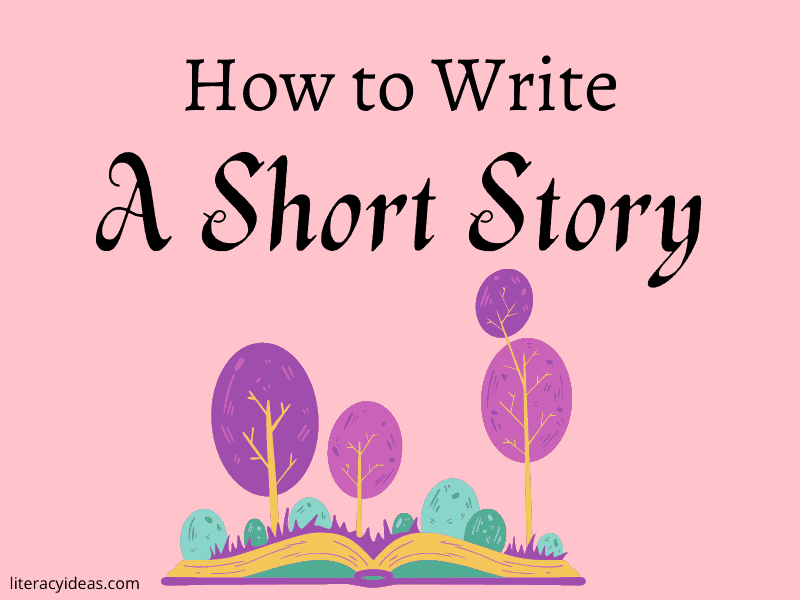
Short Story Writing for Students and Teachers
IELTS Writing Task 2 Introduction Strategy | IELTS Weekly Specials | Mother isn’t Murder Podcast | Ep.15 | March 15, 2024 Mother isn't Murder
Mother isn’t Murder Podcast Host: Adenike Babalola (IELTS Coach with 6+ years experience) Episode Title: IELTS Writing Task 2 Introduction Strategy | IELTS Weekly Specials | Mother isn’t Murder Podcast | Ep.15 | March 15, 2024 Your IELTS Writing Task 2 Introduction should have two main parts, and these things give your Essay a strong start. When you paraphrase or rewrite the question in your own words, you show that you truly understand the question. When you state your response and include a summary of your points in the introduction, you give the examiner a clear picture of what your IELTS Essay will entail. Listen to this episode to learn how different IELTS examiners write their introductions and how you can write yours so you can achieve your desired IELTS result. Enjoy your listening. Click here to master IELTS Writing Task 2 using my ebook with SEVEN (7) essay samples. Download and Watch the video version of the IELTS Practice on the podcast for free here. If you love learning about the IELTS test through podcasts, discover more IELTS podcasts on FeedSpot here. Mother isn’t Murder is among the top 20 IELTS Podcasts to achieve your desired IELTS test band score. Go here to learn more about my Online IELTS Training program. Share this podcast show, Mother isn't Murder, with someone you know is preparing for the IELTS Test. Follow, Rate, and review Mother isn't Murder on Spotify or Mother isn't Murder on Apple Podcasts. Support the showEmail me here: [email protected] Listen to more IELTS practice episodes: https://motherisntmurder.buzzsprout.com/ Support my podcast: https://www.buzzsprout.com/1832398/supporters/new
- More Episodes
- © 2024 Mother isn't Murder

IMAGES
VIDEO
COMMENTS
An essay is the first part of the writing and it is obligatory. The question always has a discursive focus. ... Below is a sample list of academic essay writing topics/tasks for B2-level (intermediate) students. You can use them to practice writing English essays or to prepare for the Cambridge B2 First (FCE) exam.
Writing practice is a method of becoming a better writer that usually involves reading lessons about the writing process, using writing prompts, doing creative writing exercises, or finishing writing pieces, like essays, short stories, novels, or books. The best writing practice is deliberate, timed, and involves feedback.
prompt on your own. You'd be surprised how often someone comes to the Writing Center to ask for help on a paper before reading the prompt. Once they do read the prompt, they often find that it answers many of their questions. When you read the assignment prompt, you should do the following: • Look for action verbs.
Step 1: Prewriting. Step 2: Planning and outlining. Step 3: Writing a first draft. Step 4: Redrafting and revising. Step 5: Editing and proofreading. Other interesting articles. Frequently asked questions about the writing process.
Whether writing a particular academic essay (such as persuasive, narrative, descriptive, or expository) or a timed exam essay, the key to getting good at writing is to write. Creating opportunities for our students to engage in extended writing activities will go a long way to helping them improve their skills as scribes.
This section offers writing practice to help you write clear, detailed text on a wide range of topics related to your interests. Texts include essays, reports, reviews, messages and emails. Each lesson has a preparation task, a model text with writing tips and three tasks to check your understanding and to practise a variety of writing skills.
The essay writing process consists of three main stages: Preparation: Decide on your topic, do your research, and create an essay outline. Writing: Set out your argument in the introduction, develop it with evidence in the main body, and wrap it up with a conclusion. Revision: Check your essay on the content, organization, grammar, spelling ...
At the Writing Center, we work one-on-one with thousands of student writers and find that giving them targeted writing tasks or exercises encourages them to problem-solve, generate, and communicate more fully on the page. You'll find targeted exercises here and ways to adapt them for use in your course or with particular students.
This section offers writing practice to help you write simple connected text on familiar topics that are of personal interest. Texts include forum posts, reviews, messages, short essays and emails. Each lesson has a preparation task, a model text with writing tips and three tasks to check your understanding and to practise a variety of writing ...
Among both exercises to improve writing skills and fun writing exercises for adults, writing metaphor lists is one of the best writing exercises out there. A metaphor list is simple. On a notebook, create two columns. In one column, write down only concrete nouns. Things like a pillow, a tree, a cat, a cloud, and anything that can be perceived ...
Procedure: introduce focus of the lesson: Writing Task 2 - Essay structures and introductions. give each student a copy of Worksheet 1 and one minute to read the Task 2 question. elicit possible next steps before writing i.e. brainstorming ideas. draw attention to the True / False task and clarify the importance of spending time with the ...
Our free online tool helps you to practise your writing and get valuable feedback instantly. Write & Improve is simple to use: just choose a task, write or upload a written response and use the feedback to quickly improve. It shows you how to improve your spelling, grammar and vocabulary. Join over 2 million learners of English who have used ...
Essay Writing Exercises. Write the opposite viewpoint to your argument. Most essays, particularly academic ones, need to offer some form of opinion or argument while addressing counter-arguments and bringing those down. Try writing a short draft of your essay from the opposite perspective to the one that you'll be arguing. This helps you to ...
• Learn useful techniques for planning your own essay. • Evaluate two examples of a Writing Part 1 essay. • Practise and evaluate your own answer to a Writing Part 1 task. Review: Writing Part 1 . The B2 First for Schools Writing paper has two parts. Part 1 has only one task, which you . must. answer. You will: be given the essay title.
There are different types of model texts, with writing tips and interactive exercises that practise the writing skills you need to do well at school, get good marks in your tests and exams, and get more out of your free-time activities. Take our free online English test to find out which level to choose. Select your level, from beginner (CEFR ...
2. RELEVANT WRITING. Picture this. Energetic lyrics fill the air as students listen, think critically, and analyze them. Or, students snap a photo of a page from an independent reading book, grinning as they annotate it with gifs, text, emojis, and more. Spotify and Snapchat are extremely popular apps for students.
TOEFL iBT Test Writing Section. The TOEFL iBT test Writing section measures your ability to write in English in an academic setting, and to present your ideas in a clear, well-organized way. There are two writing tasks. Integrated writing task (20 minutes) — read a short passage and listen to a short lecture, then write in response to what ...
100 IELTS Essay Questions. Below are practice IELTS essay questions and topics for writing task 2. The 100 essay questions have been used many times over the years. The questions are organised under common topics and essay types. IELTS often use the similar topics for their essays but change the wording of the essay question.
ESS008 - Extreme Activities. ESS007 - Becoming Happy By Helping Others. ESS006 - Time Management. ESS005 - Immigrants In A New Country. ESS004 - Teenagers and Their Free Time. ESS003 - The Importance of Learning Foreign Languages. ESS002 - Daily Exercise in Schools. ESS001 - Healthy Nutrition.
7. Comic Strip Script. The Purpose: Give your students the chance to improve their dialogue writing skills and to work on their understanding of character development in this fun activity which combines writing with the use of a series of visual elements. The Process: There are two ways to do this activity.
Click here to master IELTS Writing Task 2 using my ebook with SEVEN (7) essay samples. Download and Watch the video version of the IELTS Practice on the podcast for free here. If you love learning about the IELTS test through podcasts, discover more IELTS podcasts on FeedSpot here.
(The essay-writing businesspeople are probably using these, too, so you're better off eliminating the middleman and using them on your own.) The best AI essay-helper tools.